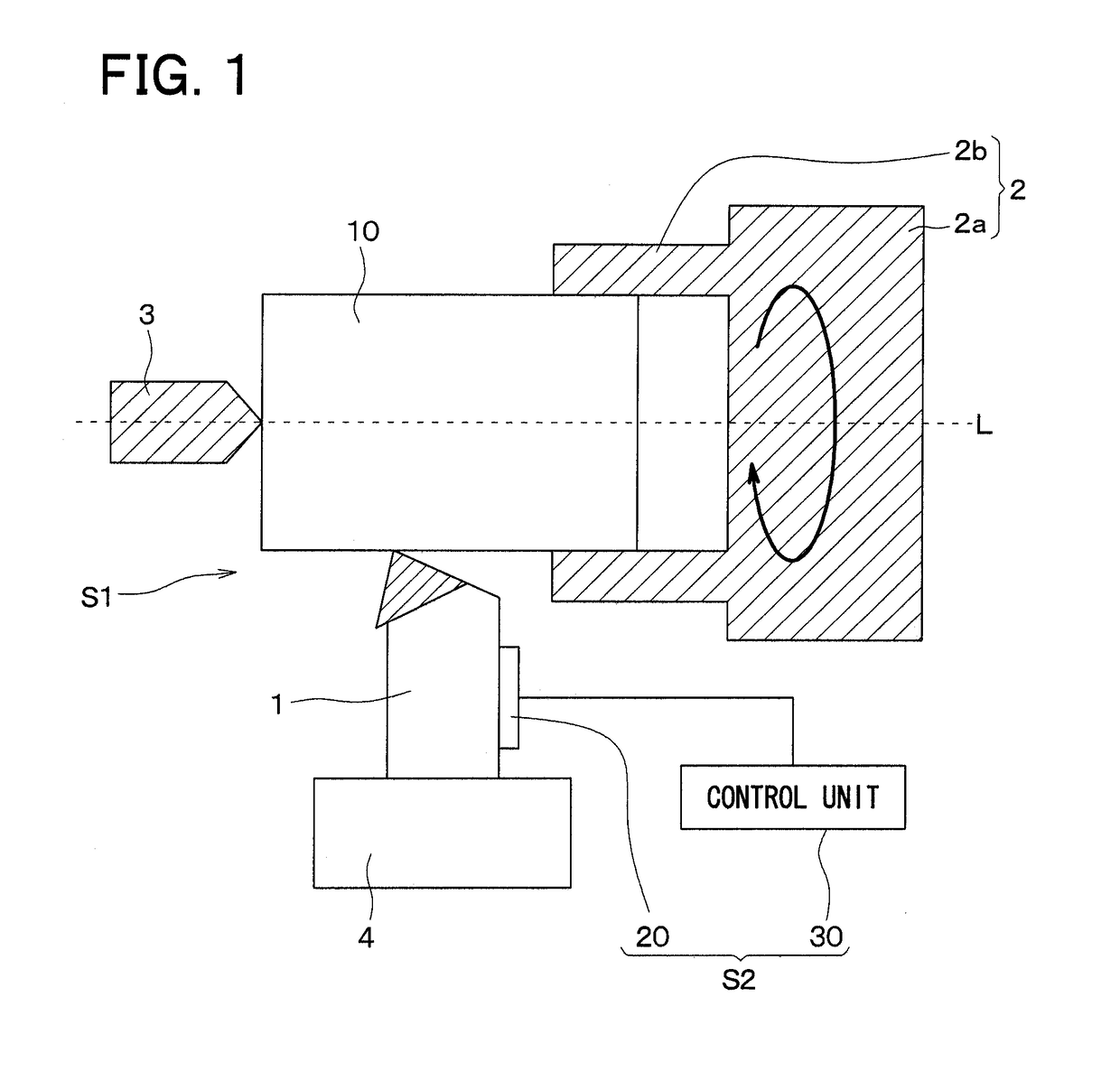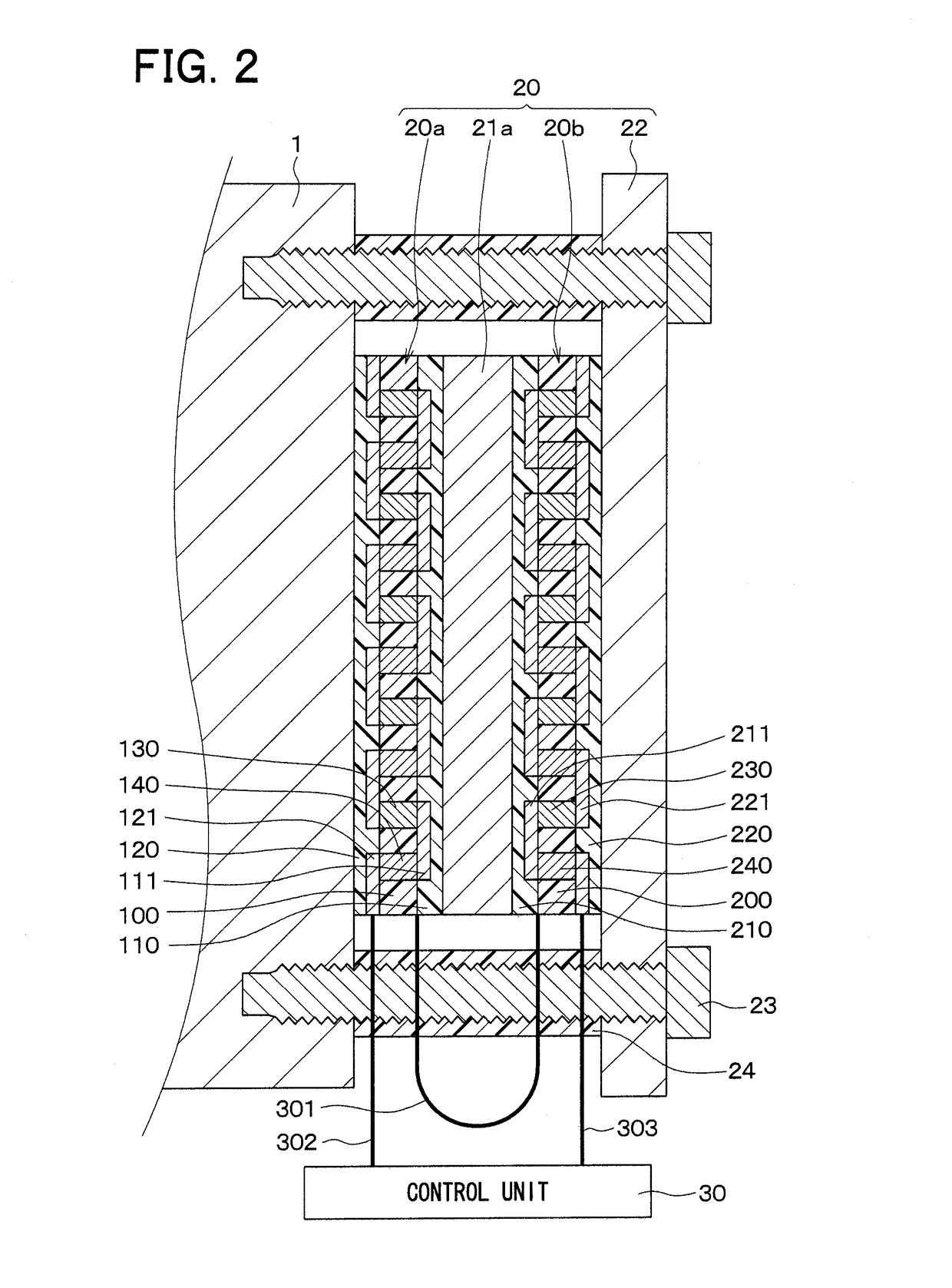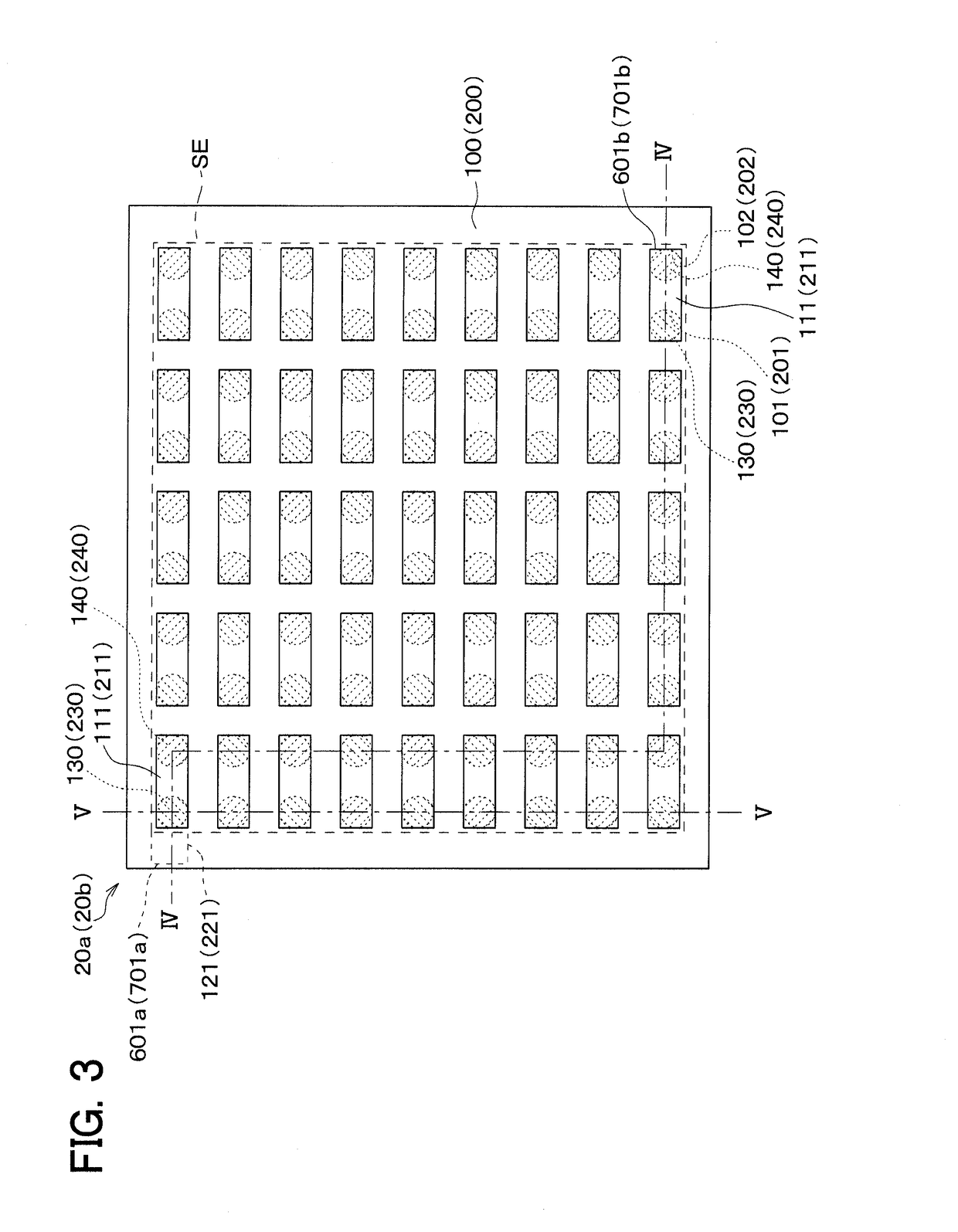State detection sensor
- Summary
- Abstract
- Description
- Claims
- Application Information
AI Technical Summary
Benefits of technology
Problems solved by technology
Method used
Image
Examples
first embodiment
[0029]A first embodiment of the present disclosure will be described with reference to the drawings. In the present embodiment, there will be described an example of an abnormality determining device, which determines an abnormal heat generation (state) of a cutting device through use of a state detection sensor of the present disclosure. As shown in FIG. 1, the cutting device S1 includes a blade 1 and a pair of first and second jigs 2, 3. In the present embodiment, the blade 1 is fixed to a support member 4. The first jig 2 includes a main body 2a and three holding portions 2b (only two of the holding portions 2b are shown in FIG. 1), which project from the main body 2a in a common direction. A processing subject member 10 is clamped with the three holding portions 2b. The second jig 3 is placed on an opposite side of the processing subject member 10, which is opposite from the side where the processing subject member 10 is clamped by the first jig 2, such that the second jig 3 coo...
second embodiment
[0085]A second embodiment of the present disclosure will be described. In the present embodiment, a heat receiving body is placed on an opposite side of the first heat flux sensor 20a, which is opposite from the thermal buffer body 21a. The rest of the present embodiment is the same as that of the first embodiment and thereby will not be described for the sake of simplicity.
[0086]In the present embodiment, as shown in FIG. 9, the state detection sensor 20 includes the heat receiving body 25, which is placed on the opposite side of the first heat flux sensor 20a, which is opposite from the thermal buffer body 21a. That is, the state detection sensor 20 includes the heat receiving body 25, which is placed between the blade 1 and the first heat flux sensor 20a. Similar to the thermal buffer body 21a and the heat releasing body 22, the heat receiving body 25 is in a form of a planar plate that has a predetermined heat capacity (thermal resistance) and is made of, for example, metal (e.g...
third embodiment
[0089]A third embodiment of the present disclosure will be described. In the present embodiment, additional heat flux sensors and additional thermal buffer bodies are provided to the structure of the first embodiment. The rest of the present embodiment is the same as that of the first embodiment and thereby will not be described for the sake of simplicity.
[0090]In the present embodiment, as shown in FIG. 10, the state detection sensor 20 includes third and fourth heat flux sensors 20c, 20d and thermal buffer bodies 21b, 21c in addition to the first and second heat flux sensors 20a, 20b and the thermal buffer body 21a. In the state detection sensor 20, the first heat flux sensor 20a, the thermal buffer body 21a, the second heat flux sensor 20b, the thermal buffer body 21b, the third heat flux sensor 20c, the thermal buffer body 21c, the fourth heat flux sensor 20d and the heat releasing body 22 are arranged one after another in this order from the blade 1 side.
[0091]The constructions...
PUM
 Login to View More
Login to View More Abstract
Description
Claims
Application Information
 Login to View More
Login to View More - R&D
- Intellectual Property
- Life Sciences
- Materials
- Tech Scout
- Unparalleled Data Quality
- Higher Quality Content
- 60% Fewer Hallucinations
Browse by: Latest US Patents, China's latest patents, Technical Efficacy Thesaurus, Application Domain, Technology Topic, Popular Technical Reports.
© 2025 PatSnap. All rights reserved.Legal|Privacy policy|Modern Slavery Act Transparency Statement|Sitemap|About US| Contact US: help@patsnap.com



